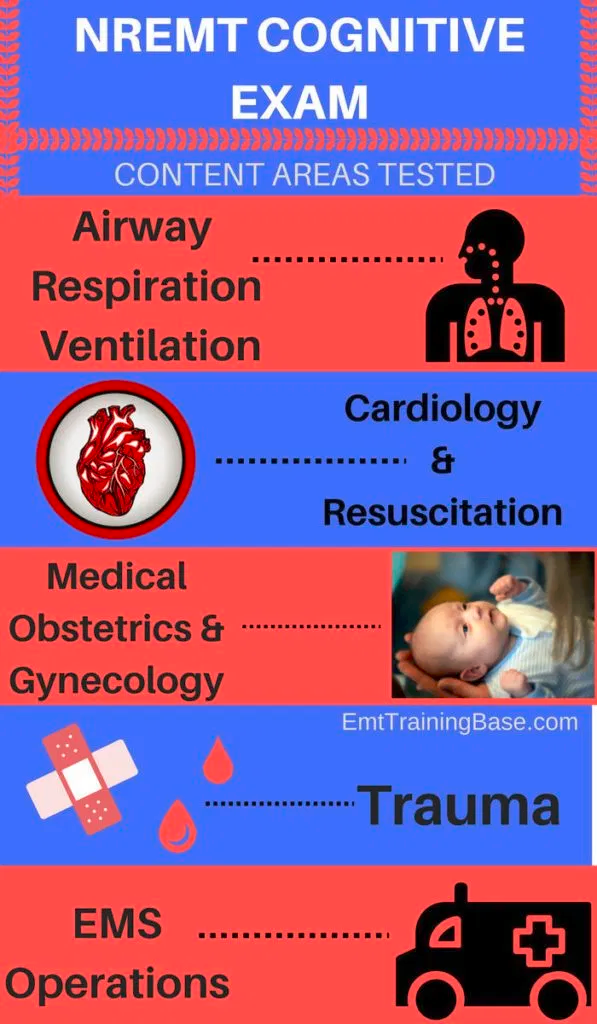What Does It Take to Be an EMT?
Emergency Medical Technicians (EMTs) have one of the most exciting and fulfilling jobs in healthcare.
On the other hand, as first-line medical and emergency responders, they can expect their jobs to be quite intense and demanding. The job certainly takes commitment and dedication, even to just get into the field.
Let’s break down exactly why that is and what it really takes to be an EMT:
1. Training to Be an EMT
The first step to becoming an EMT is to complete an EMT training program. The basic 120-150 credit hour program equips students with the needed skills for the job, including patient assessment, opening airways, restoring breathing, controlling blood loss, bandaging wounds, and treating poisonings and burns—just to name a few.
On top of the class hours, EMTs must also get hands-on practical experience that includes face time with patients in simulated emergencies to familiarize themselves with equipment, practice patient care and assessment, and get the feel of the pressure and challenges of emergency scenarios.
Training also includes preparing students to pass EMT certification exams such as the National Registry of Emergency Medical Technicians (NREMT) test, which includes both a Cognitive Exam and the Psychomotor Exam.
Upon passing your certification, take note that you have about two years before the certification expires. Recertification is required for all EMTs and it can be done via the NREMT website. If you are unable to renew your certification within the two years, an EMT refresher course is required before you can reapply for certification.

Take note as well that applicants must meet several basic requirements before they can start EMT training. For instance, prospective students have to be at least 18 years of age, have a high school diploma or completed their GED, be state-certified in CPR, and get vaccinated against measles, mumps, rubella, and tetanus.
2. The Role of EMTs in Healthcare
EMTs work closely with other workers in the healthcare field as well as firefighters and police. Firefighters are known for assisting with difficult extractions during emergencies such as vehicle collisions. After arriving at the hospital, EMTs are expected to work directly with nurses and emergency medical doctors to seamlessly transfer patient care. EMTs are responsible for accurately relaying relevant patient information, important medical history, and recent physical exam findings, having been the first responder.
3. EMT Time Commitment
If you’re still training to be an EMT, most schools offer a four-month program that involves hands-on training and classroom instruction. Day and evening classes are also available allowing students more flexibility in terms of scheduling their training and studies.
For those who are about to enter the workforce as EMTs, the time commitment will vary depending on where you’re working. However, generally, EMTs have to work in shifts across a 24-hour workday. Depending on how many EMTs are available, they could complete anywhere from two to three shifts monthly. Shifts will also vary depending on whether you’re employed as a full time or part time EMT.
4. Advancement Opportunities After Earning Certification
The fastest route to becoming a first responder and working in emergency medicine is through basic EMT training. Upon completion, you will earn your EMT certification and can choose to work immediately or opt to continue your training if you want additional credentials.
Moving up from basic EMT training requires an additional 300 to 350 credit hours of coursework and a completely different set of exams from the NREMT. As an intermediate EMT, you take on more responsibility as a first responder and are required to have advanced skills in more in-depth subjects such as non-medical IVs, drug administration of specific drugs, and familiarity with more advanced airway adjuncts.
Beyond intermediate EMT training, the highest level of medical emergency response training you can obtain is to become a paramedic. Training to be a paramedic requires additional skills and education in physiology and human anatomy. Paramedic certification usually requires an associate’s degree, which takes about two years of training. Education involves classroom-based coursework that covers subjects such as anatomy, defibrillation, physiology, and paramedicine along with other, more advanced medical procedures and comprehensive hands-on training.
The educational requirements and intensive training required to be an EMT can be tough—which should only be expected for a profession where people’s lives are in your hands.
Similarly, the demands of the job once you earn your certification as a first responder can be intense. The work itself, however, can be very rewarding and can lead to a highly fulfilling career in emergency healthcare. While not everyone will have the dedication needed to get through the challenges, for some, it will prove to be the experience of a lifetime. If you want to know if you have what it takes to be an EMT, check out our EMT Career Training Readiness Quiz.
If you’re interested in becoming an EMT, visit HCI and get in touch with us today.














